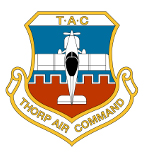 |
Thorp Air Command - T18.netSupporting Owners, Builders and Pilots of the Thorp T-18 and its variants. |
 |
| It is currently Tue Oct 28, 2025 9:02 pm |
 |
Thorp Air Command - T18.netSupporting Owners, Builders and Pilots of the Thorp T-18 and its variants. |
 |
| It is currently Tue Oct 28, 2025 9:02 pm |
|
All times are UTC - 6 hours [ DST ] |
 
|
Page 2 of 3 |
[ 32 posts ] | Go to page Previous 1, 2, 3 Next |
|
| Author | Message | ||||
|---|---|---|---|---|---|
| dan |
|
||||
Joined: Wed Oct 21, 2009 9:30 am Posts: 898 Images: 0 Location: USA |
|
||||
| Top | |
||||
| SHIPCHIEF |
|
||||
Joined: Tue Nov 29, 2011 9:05 pm Posts: 471 Location: USA |
|
||||
| Top | |
||||
| Fraser MacPhee |
|
||||
Joined: Wed Oct 21, 2009 8:57 am Posts: 722 Images: 19 Location: USA |
|
||||
| Top | |
||||
| Rich Brazell |
|
||||
Joined: Wed Oct 21, 2009 12:33 pm Posts: 3114 Images: 64 Location: Jamul, CA (San Diego area) |
|
||||
| Top | |
||||
| dan |
|
||||
Joined: Wed Oct 21, 2009 9:30 am Posts: 898 Images: 0 Location: USA |
|
||||
| Top | |
||||
| Rich Brazell |
|
||||
Joined: Wed Oct 21, 2009 12:33 pm Posts: 3114 Images: 64 Location: Jamul, CA (San Diego area) |
|
||||
| Top | |
||||
| SHIPCHIEF |
|
||||
Joined: Tue Nov 29, 2011 9:05 pm Posts: 471 Location: USA |
|
||||
| Top | |
||||
| SHIPCHIEF |
|
||||||
Joined: Tue Nov 29, 2011 9:05 pm Posts: 471 Location: USA |
|
||||||
| Top | |
||||||
| SHIPCHIEF |
|
||||||
Joined: Tue Nov 29, 2011 9:05 pm Posts: 471 Location: USA |
|
||||||
| Top | |
||||||
| SHIPCHIEF |
|
||
Joined: Tue Nov 29, 2011 9:05 pm Posts: 471 Location: USA |
|||
| Top | |
||
| SHIPCHIEF |
|
||||||||
Joined: Tue Nov 29, 2011 9:05 pm Posts: 471 Location: USA |
|
||||||||
| Top | |
||||||||
| stug |
|
||||||||
Joined: Tue Aug 24, 2010 2:20 am Posts: 158 Images: 0 Location: Australia |
|
||||||||
| Top | |
||||||||
| Hagle347 |
|
|||||
Joined: Tue Oct 26, 2010 3:42 pm Posts: 568 Images: 19 Location: USA |
|
|||||
| Top | |
|||||
| Ryan Allen |
|
|||||
Joined: Wed Oct 21, 2009 6:10 pm Posts: 1143 Images: 0 Location: Louisiana |
|
|||||
| Top | |
|||||
| Jeff J |
|
||||
Joined: Wed Aug 31, 2016 8:18 am Posts: 584 Images: 0 Location: eastern OK |
|
||||
| Top | |
||||
 
|
Page 2 of 3 |
[ 32 posts ] | Go to page Previous 1, 2, 3 Next |
|
All times are UTC - 6 hours [ DST ] |
Who is online |
Users browsing this forum: No registered users and 39 guests |
| You cannot post new topics in this forum You cannot reply to topics in this forum You cannot edit your posts in this forum You cannot delete your posts in this forum You cannot post attachments in this forum |